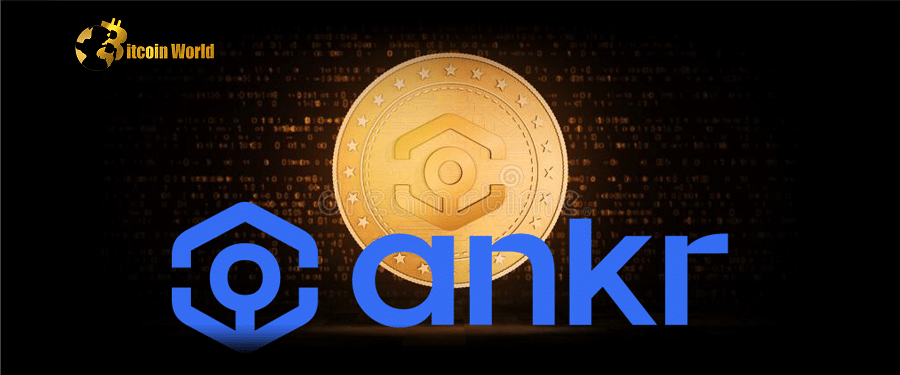The world of Web3 experienced another jolt recently as Ankr, a decentralized Web3 infrastructure provider, faced a significant exploit. At least $5.5 million was stolen from BNB Chain liquidity pools and money markets, sending ripples through the crypto community. Let’s dive into the details of the attack, Ankr’s response, and what it means for users and the broader DeFi ecosystem.
What Happened? The Ankr Exploit Unveiled
On a fateful Friday, Ankr confirmed that its aBNBc token was exploited. The attacker made off with a staggering 60 trillion aBNBc through six distinct transactions. Here’s a breakdown of how the exploit unfolded:
- Initial Theft: The attacker exploited the aBNBc token, creating a massive amount of unbacked tokens.
- Liquidity Drain: These tokens were then used to drain liquidity from decentralized exchanges on the BNB Chain.
- Helio Protocol Raid: The attacker targeted Helio, withdrawing $16 million in HAY (Helio’s stablecoin) and converting it into $15.5 million BUSD.
Before the attack, Helio Protocol boasted a Total Value Locked (TVL) of $90 million, according to DeFiLlama. This exploit significantly impacted the protocol and its users.
Ankr’s Response: Reassurances and a Recovery Plan
Ankr quickly moved to reassure its community, stating that other products like validators, RPC nodes, and AppChain services were unaffected. This was particularly important for holders of aETHc (Ankr staked ether), which has a market cap of around $68 million.
Chandler Song, Ankr’s co-founder and CEO, acknowledged the unfortunate reality of hacks in Web3, emphasizing that they were well-prepared. Ankr proposed an “action plan” to compensate aBNBc users by creating and airdropping a new ankrBNB token, based on a pre-exploit snapshot of on-chain data.
The Million-Dollar Question: How Did It Happen?
The exact cause of the breach remains unclear, but it appears the attacker gained access to the aBNBc smart contract deployer’s private key. Industry best practices, such as using timelocks and multisignature wallets on upgradeable smart contracts, could have potentially prevented this.
Decentralization vs. Security: A Balancing Act
The incident highlights the ongoing tension between decentralization and security in the DeFi space. While fully decentralized dapps like Uniswap on Ethereum are unupgradable, some liquid staked BNB providers, such as pSTAKE, use multisigs to secure sensitive contracts and restrict access to token creation functionalities.
The Aftermath: Compensation and Ongoing Negotiations
Ankr has committed to compensating users of connected DeFi dapps for their losses. For example, Ankr will cover Helio Protocol’s outstanding debts, with negotiations still in progress, according to Helio Protocol’s official Twitter account.
Key Takeaways for the Crypto Community
- Security is Paramount: This exploit underscores the critical importance of robust security measures in Web3.
- Risk Management: Diversification and awareness of smart contract risks are essential for DeFi users.
- Community Response: Ankr’s proactive response and compensation plan are crucial for maintaining trust.
Conclusion: Navigating the Risks of DeFi
The Ankr exploit serves as a stark reminder of the risks inherent in the DeFi space. While the incident caused significant disruption, Ankr’s commitment to compensation and the broader industry’s focus on security improvements offer hope for a more secure and resilient future for Web3. Staying informed, practicing caution, and supporting projects that prioritize security are vital for navigating the exciting yet challenging world of decentralized finance.
Disclaimer: The information provided is not trading advice, Bitcoinworld.co.in holds no liability for any investments made based on the information provided on this page. We strongly recommend independent research and/or consultation with a qualified professional before making any investment decisions.


